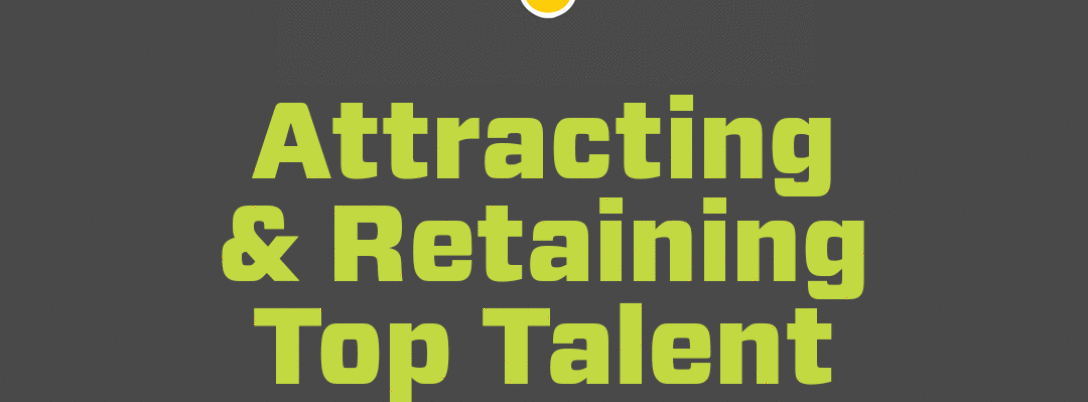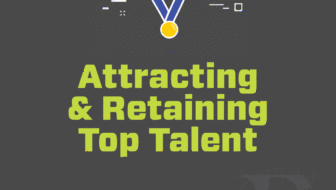Attracting & Retaining Top Talent: Architecture as a Competitive Advantage for Recruitment
Have you ever experienced the joy of finding the perfect person for a job…only for the applicant to withdraw their application in the middle of the hiring process? Perhaps it’s more accurate that your firm’s recruiting efforts routinely yield few qualified candidates, or you experience a low response rate altogether.
When employers are all trying to attract and hire the same talented job seekers from the same pool of applicants, organizations must seek comprehensive strategies to attract and retain potential and current employees.
Have you ever considered that your company’s architecture could be a competitive recruitment advantage (or disadvantage)?
On a macro level, architecture can define a region or a city, characterize and enhance its competitiveness, and attract firms and skilled workers (or repel them). The same can be assessed on an organizational level. A company’s architecture is one of the most visible components of a brand, continually on display for clients, job candidates, and passers-by. A brand is not built by accident but is the product of carefully accomplishing – either explicitly or implicitly – a series of logically linked steps with consumers.1 Just as an applicant’s resume or educational background, can provide broad-stroke signals to a hiring manager during a qualifications stage, so too can the architecture and appearance of a workplace provide a signal to applicants about that particular organization and its company culture.
The relationship between corporate architecture and corporate culture is complex because office buildings can both influence and reflect corporate identity. Layout, architecture, and workplace design can prompt desired behavior and work processes, thus influencing company culture. While at the same time, architecture can be used to communicate values and brand images, thus reflecting company culture. Overall, office buildings can be seen as material expressions of corporate culture, reflecting an organization’s norms and values.
So, what led those exemplary job applicants we were discussing earlier to withdraw their application or refrain from applying in the first place? Research indicates that job seekers are highly attentive and interpret information available from multiple sources in order to compensate for their lack of information about the potential employer.2 This information scarcity that job seekers experience early on in the application process is what leads them to make inferences about what it may be like to work there. Whether consciously or unconsciously, it is likely that job seekers use corporate architecture to infer some of the desired information.3
Even before the advent of the coronavirus (COVID-19) global pandemic, offices and work environments have been in a radical process of change.
New forms of architecture are needed to support and shape new forms of work. Take the Apple headquarters for instance – “Apple Park” – albeit, conceivably the most extreme example I could have provided, I digress. The architecture of the ring was not the achievement for Apple. “The achievement is to make a building where so many people can connect and collaborate and walk and talk,” said then Chief Design Officer, Jonathan Ive. The value is not what went into the building, but what will come out. In turn, inspiring its workforce to match that effort in the products they create and to reach ever-higher levels of quality and innovation.4
Admittedly, it is hard to relate to Apple in many regards, but we can all glean the impact of architecture on employer attractiveness. “For our corporate clients, using the office environment to attract and retain talent is top of mind,” says Brad Erwin, president and principal architect of Paragon Architecture. “There is a lot of competition for talented people in the workforce right now. Making sure that you’re creating a space that works for your existing workforce but can also be a beacon for new hires is key.”5
Take inventory of how your company differentiates itself from others who are vying for the same candidates. Put yourself in the shoes of an applicant and be as open and receptive as they would be about what your company architecture is saying about your organization. What signals of company culture and brand identity could intentionally, or unintentionally be misrepresented if you weren’t privy to the information that you have now as an insider?
How is your company architecture working against your hiring efforts and how can you make the updates you need to turn it instead into your competitive recruitment advantage?
At Paragon, we recognize that architecture is a highly visible component of branding and corporate culture, and we have an opportunity to help our partners attract and retain top talent. We partner with corporations, public entities, and health centers again and again, because we recognize that community enrichment and revitalization will lead to happier and healthier citizens, and more productive economies. So whether you are looking to update the exterior façade to match your updated brand image, renovate internal offices with collaboration spaces, or design a new facility from the ground up — when you are ready to talk about your next project, give us a call and we’ll take action together. Our architects and interior designers are passionate project managers, ready to advocate your vision from the first sketch to your final phone call—and beyond. Ready to learn more? Contact our team.
References
1Keller, K.L. (2007). Strategic brand management: Building, measuring, and managing brand equity,3rd Pearson International Edition. Upper Saddle River, NJ: Pearson Education, INC.
2Hinge Marketing. (2020). Employer Branding Study, Second Edition: Executive Summary. Reston, Virginia: Hinge Research Institute. Retrieved from https://hingemarketing.com/library/article/employer-branding-study-second-edition-executive-summary
3Radermacher, K. (2019). How Corporate Architecture Affects Job Seekers: Experimental Evidence of Signal-based Mechanisms (Doctoral) Universitätsbibliothek. Retrieved from https://d-nb.info/1195038496/34
4Levy, S. (2017). One More Thing Inside Apple’s Insanely Great (Or Just Insane) New Mothership. Wired Magazine 05.16.17. Retrieved from https://www.wired.com/2017/05/apple-park-new-silicon-valley-campus/
5Springfield Business Journal. (2020). Future Workforce, Operations Top New Space Concerns. Springfield Business Journal. Available online: https://sbj.net/stories/future-workforce-operations-top-new-space-concerns,68130



